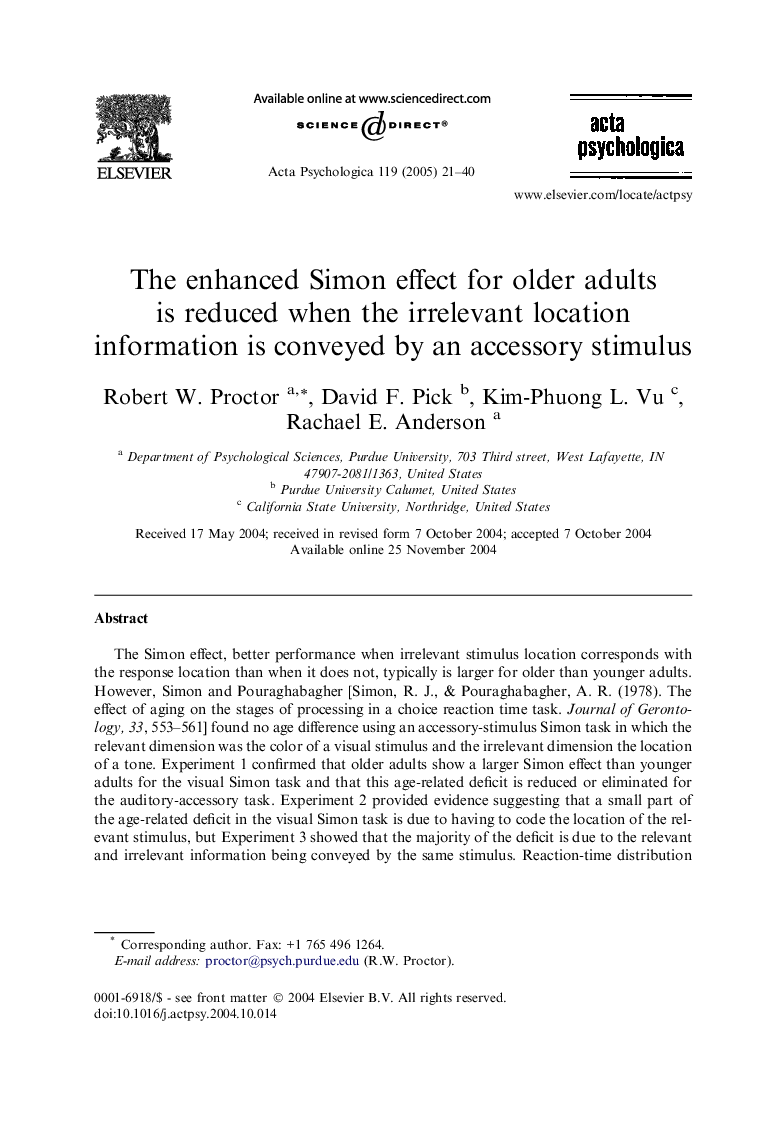| Article ID | Journal | Published Year | Pages | File Type |
|---|---|---|---|---|
| 10453898 | Acta Psychologica | 2005 | 20 Pages |
Abstract
The Simon effect, better performance when irrelevant stimulus location corresponds with the response location than when it does not, typically is larger for older than younger adults. However, Simon and Pouraghabagher [Simon, R. J., & Pouraghabagher, A. R. (1978). The effect of aging on the stages of processing in a choice reaction time task. Journal of Gerontology, 33, 553-561] found no age difference using an accessory-stimulus Simon task in which the relevant dimension was the color of a visual stimulus and the irrelevant dimension the location of a tone. Experiment 1 confirmed that older adults show a larger Simon effect than younger adults for the visual Simon task and that this age-related deficit is reduced or eliminated for the auditory-accessory task. Experiment 2 provided evidence suggesting that a small part of the age-related deficit in the visual Simon task is due to having to code the location of the relevant stimulus, but Experiment 3 showed that the majority of the deficit is due to the relevant and irrelevant information being conveyed by the same stimulus. Reaction-time distribution analyses show similar functions for younger and older adults, suggesting that the time course of activation is similar for both age groups.
Related Topics
Life Sciences
Neuroscience
Cognitive Neuroscience
Authors
Robert W. Proctor, David F. Pick, Kim-Phuong L. Vu, Rachael E. Anderson,
